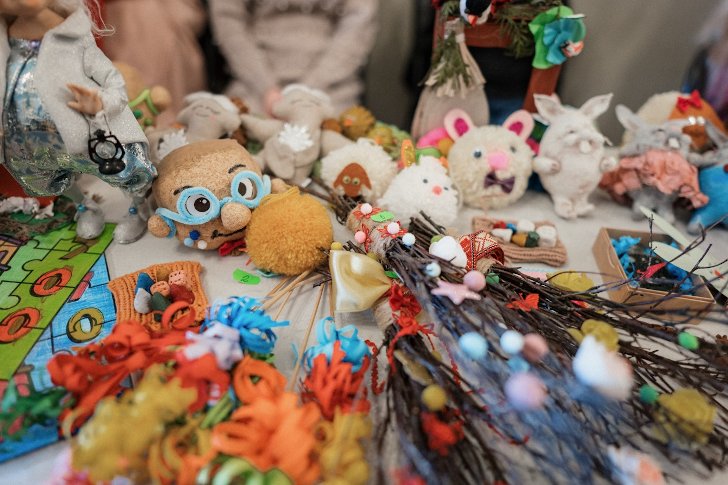The Kaziukas Fair is held around the feast day of Saint Casimir (Kaziukas is a Lithuanian diminutive for Casimir). Saint Casimir was the second son of King Casimir IV Jagiellon, the ruler of the Kingdom of Poland and the Grand Duchy of Lithuania. The prince was known for his generosity toward the poor and sick, piety, and devotion to God. Casimir died of illness at age 25 on March 4, 1484, and his brother King Sigismund I the Old initiated his canonization three decades later.
Saint Casimir was canonized either in 1521 or in 1602 and became the patron saint of Lithuania in 1636, when the Chapel of Saint Casimir was completed in the Vilnius Cathedral. In conjunction with his feast day, observed on March 4, local merchants established a fair that was held on the Sunday closest to Saint Casimir’s Day.
In 1827, merchants were granted the privilege to hold the market in the Cathedral Square in front of the Vilnius Cathedral. In 1901, the Kaziukas Fair had to move to the Lukiškės Square after the unveiling of the monument to Catherine the Great in the Cathedral Square. During the Soviet era, the fair was held at the Kalvarijos market. It returned to the Old Town of Vilnius following the independence of Lithuania in 1991. Today, the fair sprawls across much of the Old Town and attracts dozens of craftsmen and thousands of visitors every year.
The Kaziukas Fair is an impressive showcase of arts and crafts made by artisans from across Lithuania and neighboring countries, including knitted and woven clothes, footwear, toys and souvenirs, earthenware, utensils, jewelry, paintings, wood carvings, wicker items, and more. One of the fair’s specialties are Easter palms, traditional decorations associated with Palm Sunday. They are made from willow branches, dried herbs and flowers, tied around a wooden stick.
The fair is also a culinary celebration of traditional foods such as cepelinai (stuffed potato dumplings), šakotis (spit cake), vėdarai (kishka-style sausages), bubliks, rye bread, cakes, hard candy, and gira (Lithuanian kvass). A signature treat at the Kaziukas Fair is heart-shaped sweet gingerbread called Kaziukas heart. It is customary to buy Kaziukas hearts as souvenirs for those who could not attend the fair. In addition to traditional dishes, local farmers offer an impressive variety of foods including honey, smoked meat and fish products, and cheeses.
Like most traditional fairs, the Kaziukas Fair isn’t just about shopping; there’s entertainment, too! Dancers in traditional costumes, musicians, and street performers create a festive atmosphere throughout the fair.
In 2021, the fair was held online due to the COVID-19 pandemic; an online store was set up where artisans could sell their creations. Previously to that, the fair had only been canceled during the Second World War.

Photo: kaziukomuge.lt




